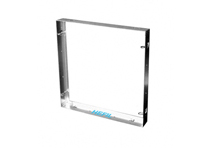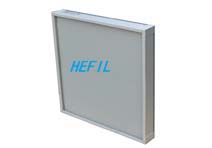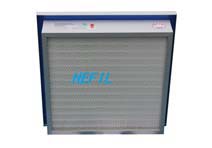Do You Know How to Design Cardboard Filters
Position:Home > News > Industry News > Do You Know How to Design Cardboard FiltersDo You Know How to Design Cardboard Filters
Source:http://www.hefilter.comStartTime:2015-09-18Hits:
What are cardboard filters? Cardboard filter is a device widely used to purify polluted gases in many heavy industry factories and many laboratories in colleges. Cardboard filters are constituted by two layers of cardboard, perforated and pleated, glued together in such a way to create “V” shaped separation cells. In each of these cells, the holes position within the cell determines an effect or cyclone which causes the paint particles to deposit at the bottom of the cell. The high efficiency in the separation comes from this effect in which the inertia of the particles is combined with important local variations in speed and direction within the cell itself. The result of this unique design is the best disposable filter using the inertia separation principle. The inertia separation principle of the filter is the key to capturing the overspray of paint, glue, resin, fiberglass, tar, oil, grease, or any other airborne liquid particle, efficiently.
Filters are designed with specific back pressure at maximum rated flow based on the requirements of the transfer pump. They often come as a duplex unit with primary and secondary filter elements. The primary element typically has a 5 to 20 micron filter and the secondary element usually has 2 to 4 microns. The filter media is typically pleated paper or some other filter membrane, but there are also filters that can be disassembled and cleaned, with fine mesh metal screens
To design a cardboard Filter, four things must be known in advance:
Firstly, the power supplies are available.
Secondly, the frequencies need to be passed, and those that need to be rejected.
Thirdly, a transition frequency, the point at which the filter starts to work or a center frequency around which the filter is symmetrical.
Fourthly, an initial capacitor value—pick one somewhere from 100 pF for high frequencies to 0.1 µF for low frequencies is needed. If the resulting resistor values are too large or too small, pick another capacitor value.
As far as I’m concerned, what is more necessary in designing cardboard filter is a convenient working principle. If the working principle of the filter is not complex, the filter will be widely accepted in practical application areas.





